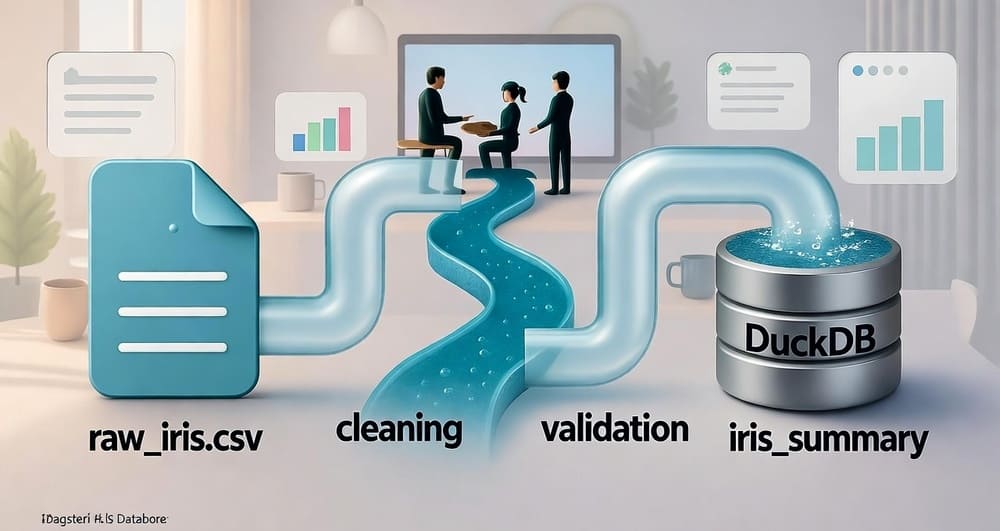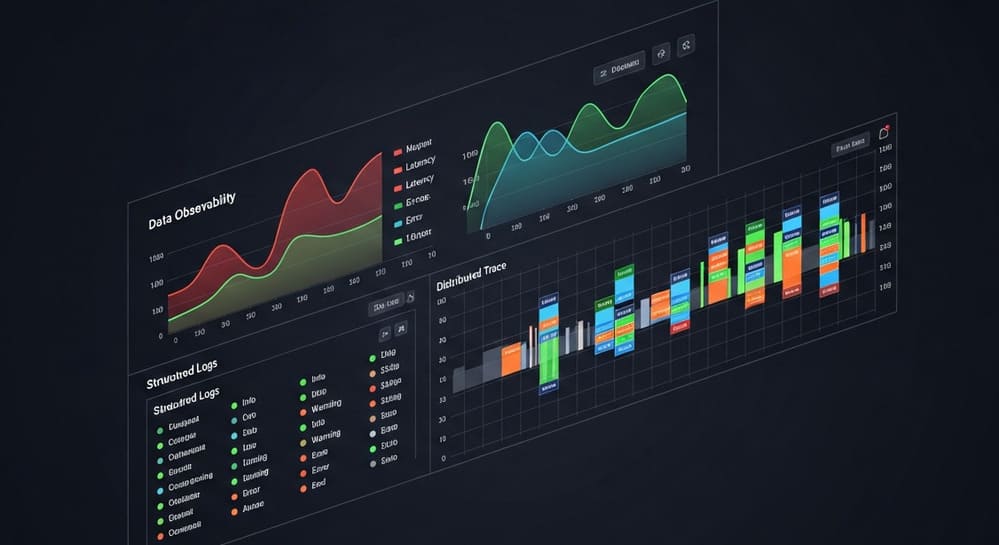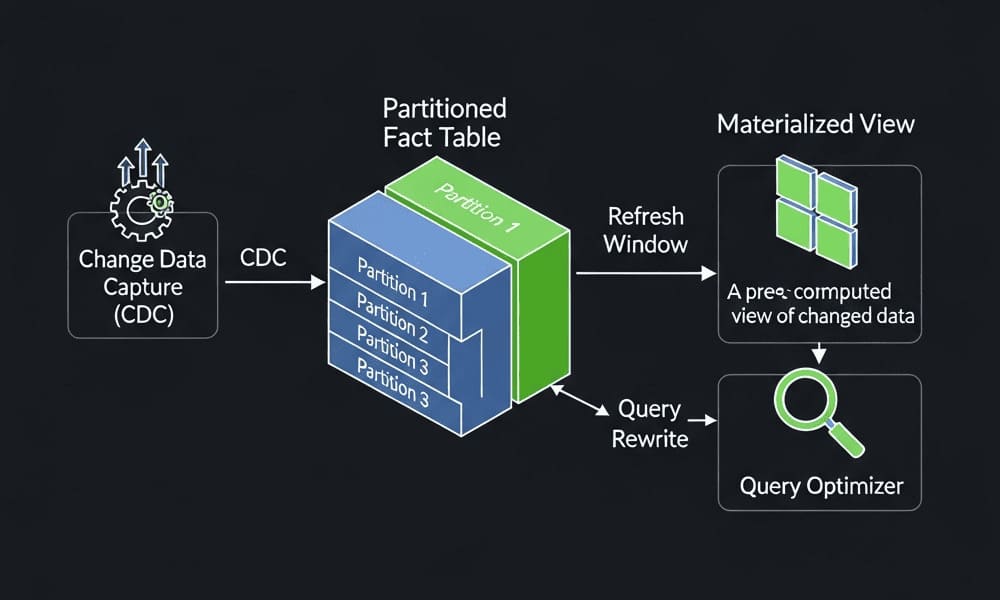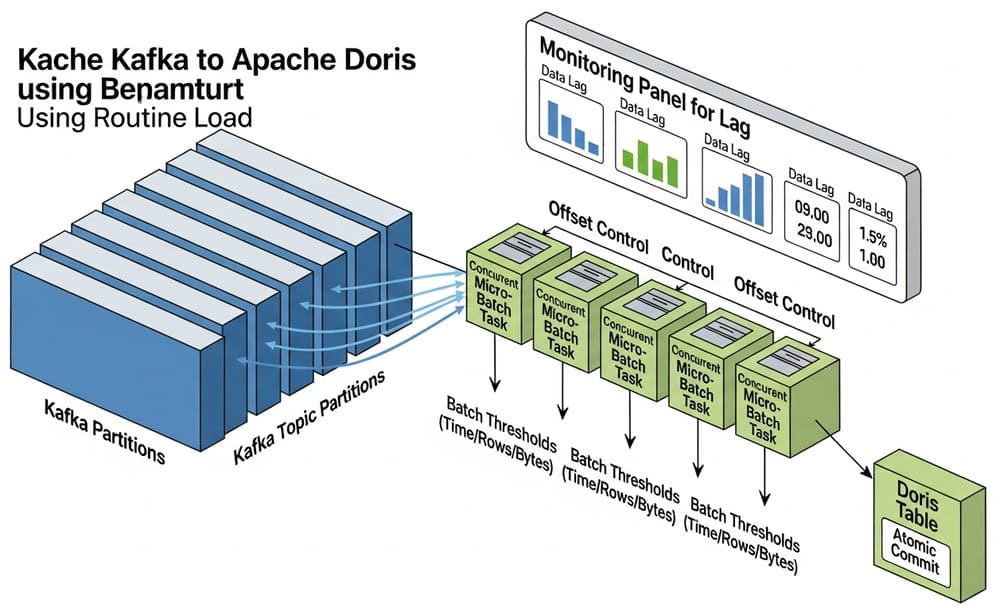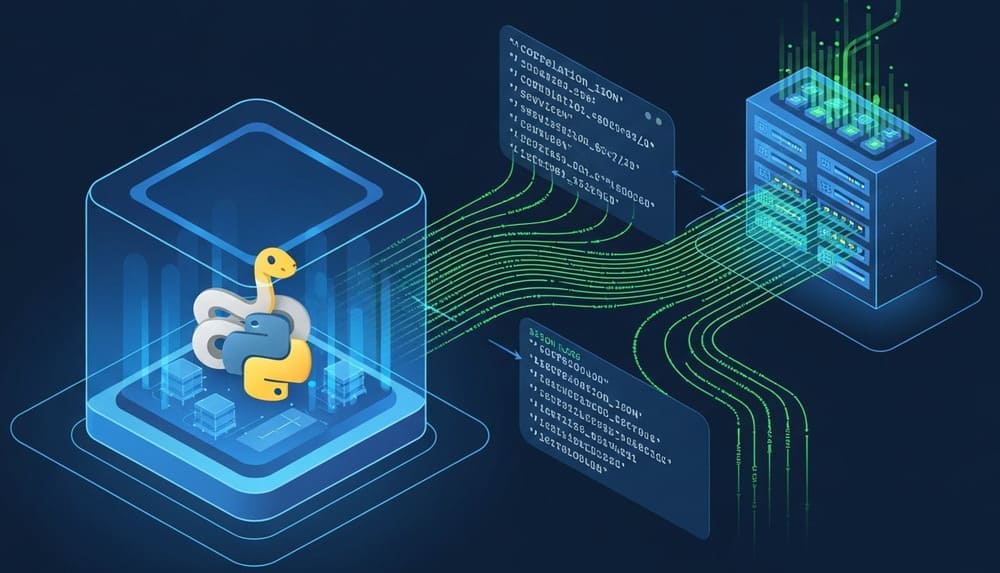Dagster Chapter 1 — Hello Assets: CSV → DuckDB
This is where we start.
You’ll see what Dagster means by an asset, how to run it locally, and why this approach feels cleaner than a pile of ad-hoc scripts.
We’ll use one small CSV file, turn it into a few tidy DataFrames, and save the result into a DuckDB file. Everything runs in Docker so your environment stays reproducible.
What You’ll Learn
- What Dagster assets are and how they describe data flow.
- How to run Dagster locally in Docker.
- How to materialize a simple graph and check the result in DuckDB.
- How to run a test end-to-end.
Why Start with Assets
In Dagster, an asset is a data product with a name, lineage, and history.
Think of it as a file, table, or dataset that Dagster knows how to build and track.
Instead of a script that just “runs,” an asset says, “Here’s what I produce, here’s what I depend on, and here’s where the result lives.”
When you build with assets, you automatically get:
- Lineage — Dagster knows which asset depends on which.
- Metadata — every run records rows, columns, and timestamps.
- Observability — logs, previews, and history appear in the UI.
- Selective runs — you can rebuild only what changed.
Our first graph looks like this:
graph TD
A[raw_iris] --> B[iris_clean] --> C[iris_summary]
Project Layout
chapter-01-hello-assets/
data/
raw/iris.csv
warehouse/
docker/
Dockerfile
docker-compose.yaml
dagster_home/dagster.yaml
scripts/start.sh
scripts/stop.sh
src/pipelines_the_right_way/ch01/
assets.py
defs.py
tests/test_assets.py
Makefile
requirements.txt
Each folder serves a clear purpose:
data/holds the CSV and the DuckDB output.docker/defines a light container image and turns off telemetry.src/keeps the Dagster code.tests/includes a small test that materializes everything once.Makefilewraps common commands.
Run It
From inside the project folder:
bash docker/scripts/start.sh
Then open http://localhost:3000.
Click Materialize all. Dagster will run three assets:
- raw_iris reads
data/raw/iris.csvand emits metadata. - iris_clean checks column types and drops nulls.
- iris_summary groups data by species and writes a DuckDB file in
data/warehouse/iris.duckdb.
When you’re done:
bash docker/scripts/stop.sh
Check the result manually:
duckdb data/warehouse/iris.duckdb
D SELECT * FROM iris_summary;
How the Code Works
assets.py
Each asset is a plain Python function decorated with @asset.
To keep paths flexible, we compute them at runtime:
def _paths():
data_dir = Path(os.getenv("PTWR_DATA_DIR", ROOT / "data"))
raw_csv = data_dir / "raw" / "iris.csv"
warehouse_dir = data_dir / "warehouse"
duckdb_path = warehouse_dir / "iris.duckdb"
return data_dir, raw_csv, warehouse_dir, duckdb_path
This avoids the usual “path not found” issues when tests or containers run in different environments.
raw_irisloads the CSV and emits metadata (row count, column names, preview).iris_cleanchecks for missing columns, converts types, and removes nulls.iris_summarygroups by species and writes the result to DuckDB:
con = duckdb.connect(str(duckdb_path))
con.register("iris_summary_df", summary)
con.execute("CREATE OR REPLACE TABLE iris_summary AS SELECT * FROM iris_summary_df")
defs.py
Dagster needs to know what assets exist:
from dagster import Definitions
from .assets import raw_iris, iris_clean, iris_summary
defs = Definitions(assets=[raw_iris, iris_clean, iris_summary])
When you run dagster dev -m pipelines_the_right_way.ch01.defs, Dagster loads this list and shows the graph in the UI.
Running in Docker
The Compose file mounts:
../datato/app/data./dagster_hometo/app/.dagster
That keeps your data and instance config outside the container image.
Telemetry is off by default, so the setup stays clean.
Testing
Run all tests with:
make test
The test creates a temporary data folder, sets environment variables before importing assets, copies the sample CSV, and materializes the graph.
It checks that the DuckDB file exists and that iris_summary has rows.
This pattern guarantees reproducible results without touching your real data/ directory.
Common Issues and Fixes
- ImportError: attempted relative import with no known parent package
→ Run withdagster dev -m pipelines_the_right_way.ch01.defs. - No instance configuration file warning
→ We already mountdocker/dagster_home/dagster.yaml. - No output file created
→ Make sure you materialized all assets; check thedata/mount in Docker. - Missing columns in CSV
→iris_cleanvalidates headers and fails clearly if they don’t match.
Observability in the UI
Click each asset to see:
- metadata you emitted,
- row counts and previews,
- compute kind (“pandas” or “duckdb”),
- the dependency graph connecting all assets.
This visibility is why assets are worth using even for small projects.
Production-Ready Touches
Even this simple setup follows good habits:
- Pinned dependencies for reproducibility.
- Dockerized environment — no local Python mess.
- Tests that cover the full pipeline.
- Idempotent DuckDB writes (
CREATE OR REPLACE TABLE).
Looking Ahead
In the next chapter, we’ll replace a static CSV with a live API and see how assets handle real data and retries.
By the end of this book, you’ll have learned how to scale from this small example to real-world, testable, observable data pipelines.
For now, if these boxes check out, you’re ready:
- UI opens at
http://localhost:3000. - Materialization creates
data/warehouse/iris.duckdb. - SQL query shows three species.
- Tests pass.
If everything works, congratulations — you’ve just built your first Dagster pipeline the right way.
(End of Chapter 1)
Official Dagster: https://dagster.io/
Github for Chapter 1: https://github.com/alexnews/pipelines-the-right-way/tree/main/chapter-01-hello-assets

